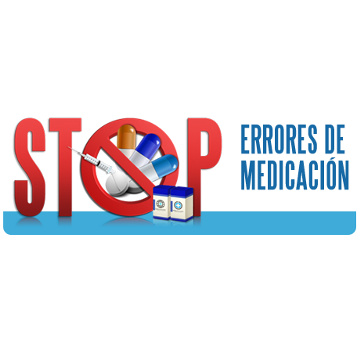
Article appeared at the blog “STOP Errores de Medicación” (STOP Medication Errors, Abstract)
At “STOP Errores de Medicación” we inform about known factors that contribute to the appearance of medication errors, like problems of lookalike drugs (whether in form, labelling or packaging) or the existance of LASA drugs (Look-Alike, Sound-Alike Medication Names). In order to avoid at hospitals the risk associated with those and other circumstances, is frequent from the pharmacy services, to implement strategies oriented to reduce medication errors, like defining secure practices and protocols, information and formation of people working with drugs, the consideration of criterions of security of use when choosing drugs and others.
Administering drugs is one of the most critical points in the whole chain of drug use at a healthcare center, as it’s the last barrier before the medication error reaches the patient. Even if the pharmacologist isn’t present at the moment of administration, that professional intervention when deciding the dispensation and the way it’s performed can contribute to avoid the error.
(…)
Knowing this situation, what can we do from the pharmacy services of a healthcare center to promote the secure administration of drugs? First, and most basic, is to implement a system of dispensing in single dose form similar to that of hospitals, so the retirement home (for example) receives already prepared the medication for each patient, instead of some worker or another has to prepare it from the commercialy packaged version of it. If we focus in the usual medication of the patients and assuming that, at least mostly, is administered orally, my recommendations are as follow:
Choose an appropriate system for dispensing: most frequently weekly trays -that include, therefore, seven daily boxes- that will be placed in a medication cart for each dinner room. In my opinion, that method has the advantage versus SPD blisters, used usually by pharmacy offices, to allow drugs in their primary packaging or the repackaging bag (with the subsequent information identifying drug, batch and expiration date), to allow recuperating the drug if it hasn’t been administered and to ease changing treatment just opening the tray. Meication trays have to have separate compartments for each one of the administrations, making them match meals (at least main meals), differently from the box of a hospital medication cart, where drugs to last 24 hours of tratment are placed .This way the worker will know immediately which medication to administer at every moment.
(…)

Comments are closed.